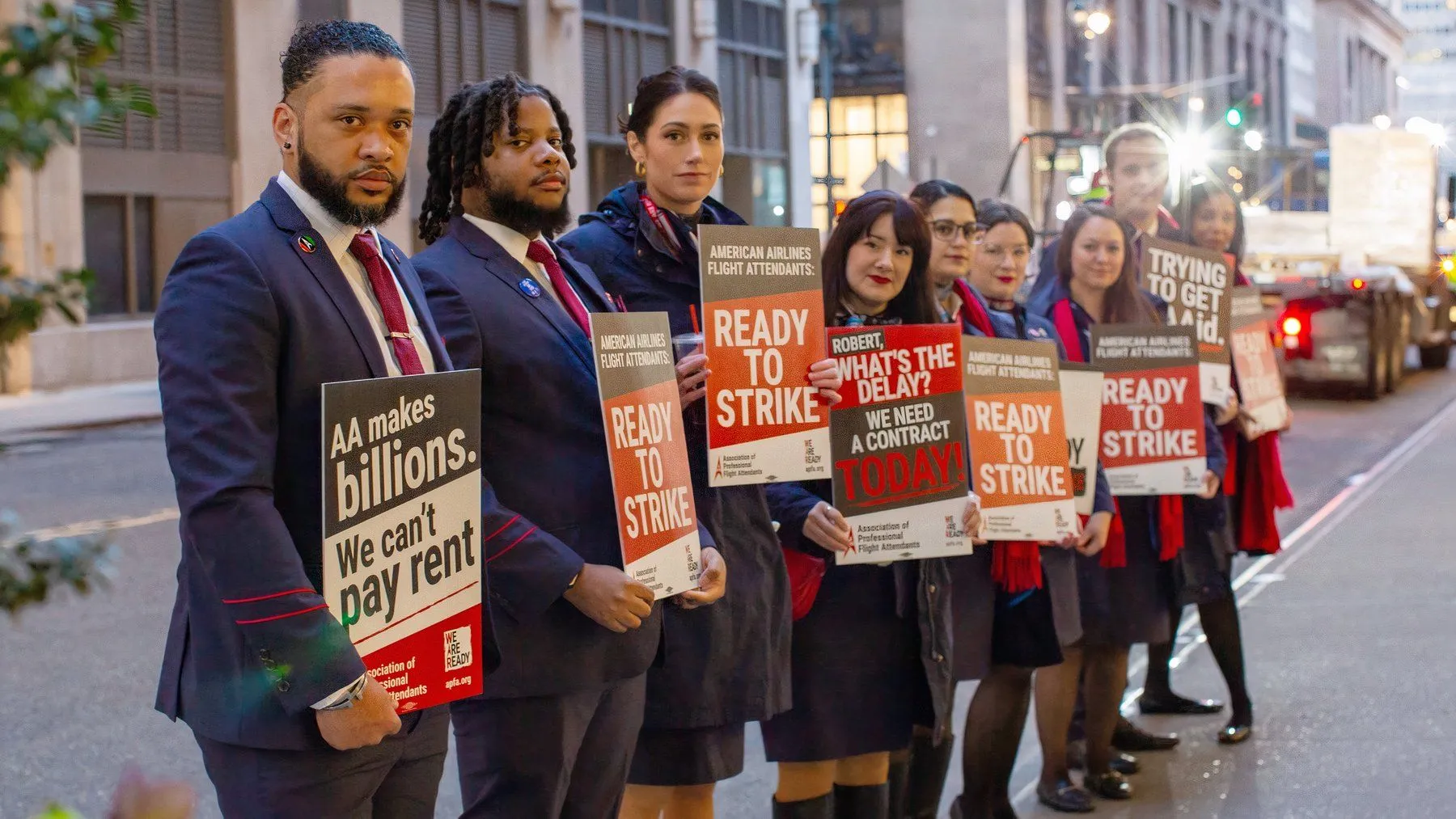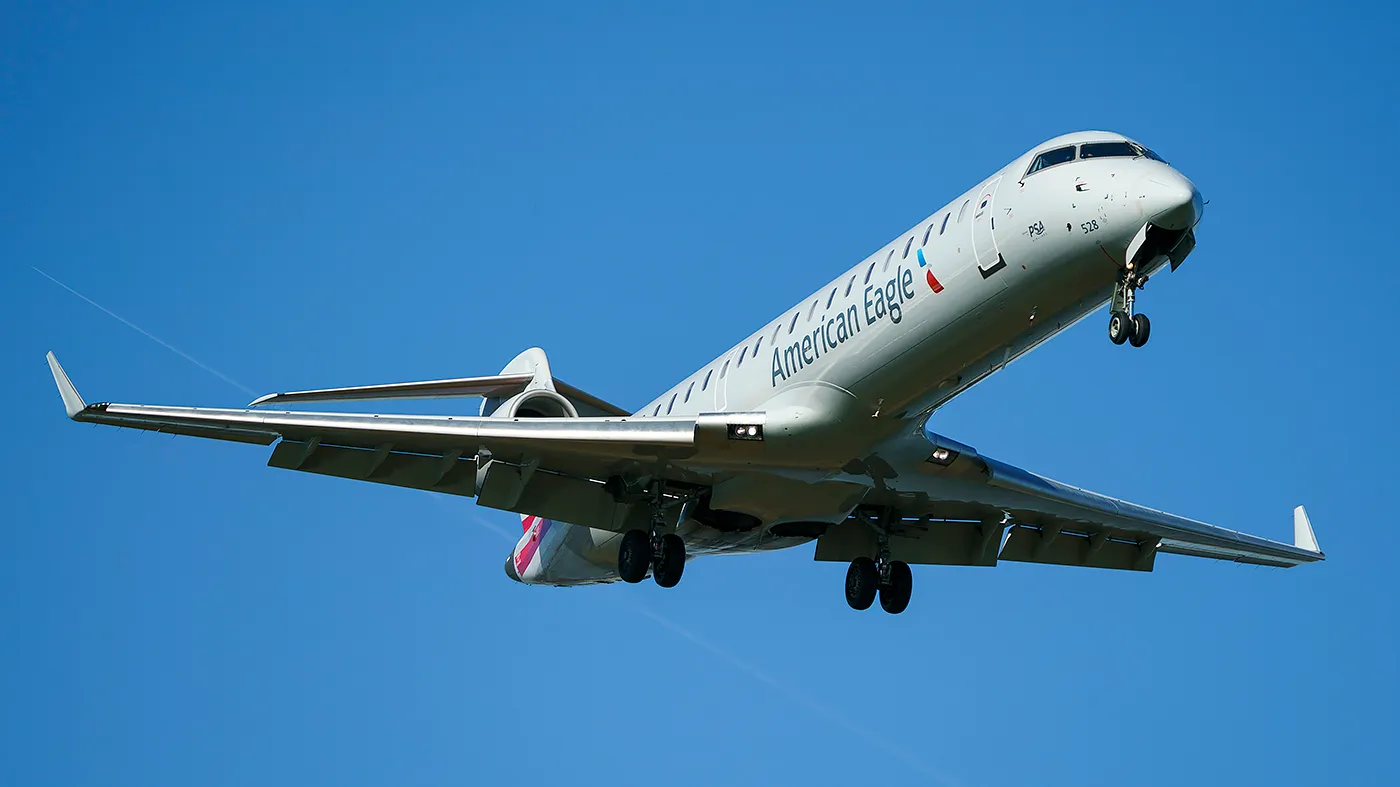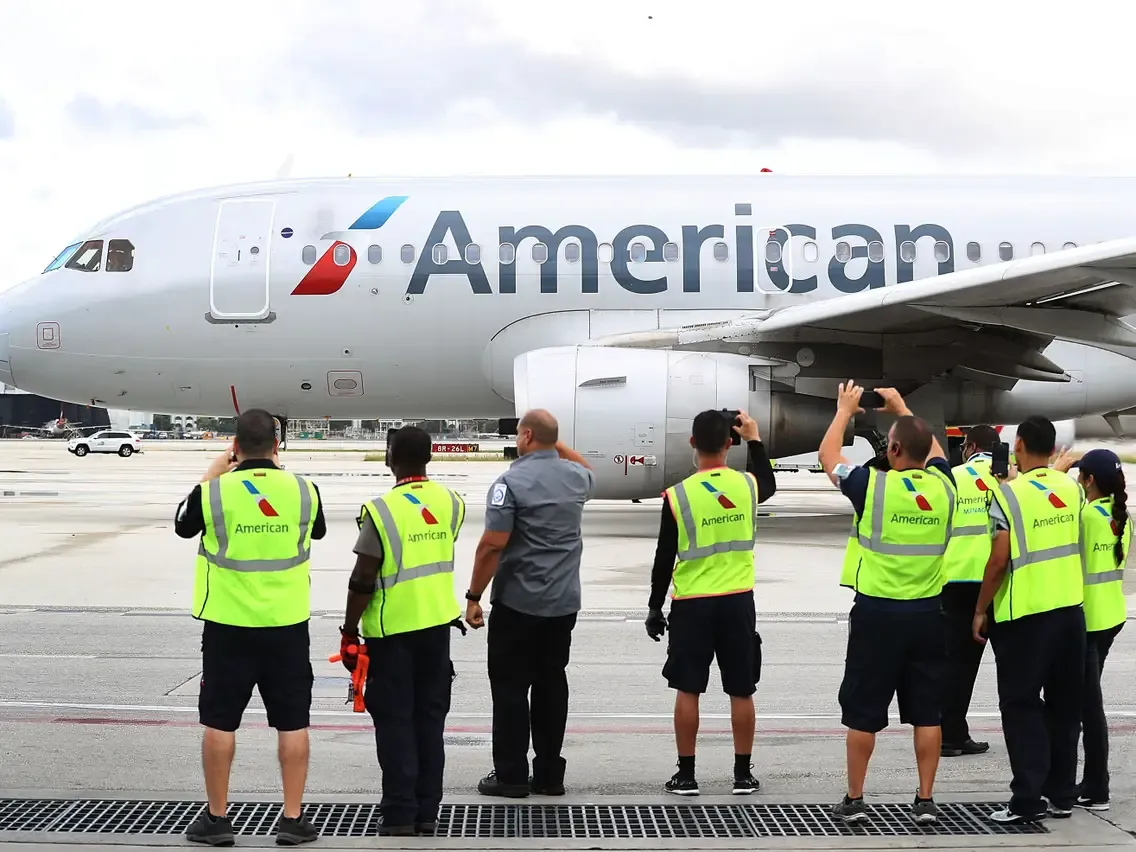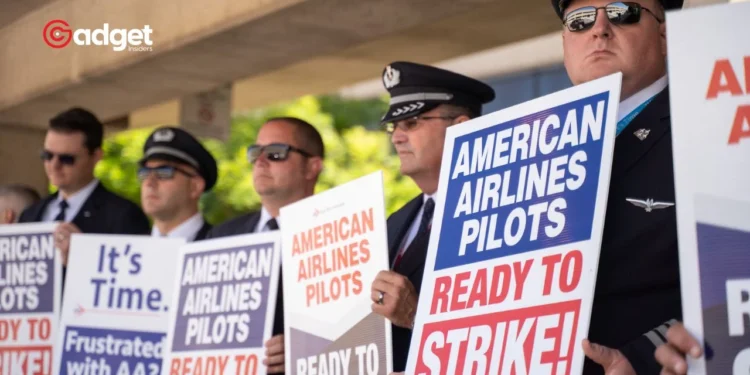In a bold move demonstrating their resolve, the American Airlines flight attendants’ union has flatly rejected a proposal for an immediate 17% pay increase. This decision came to light during a crucial period as the airline’s contract talks have yet to secure a deal, pushing the potential for a strike even closer.
On a sunny Wednesday in Washington, DC, flight attendants, empowered with placards and chants, gathered outside the White House to make their voices heard. They protested in unison for their right to strike, a last-resort action amidst stalled contract negotiations.

American Airlines: A Standoff on Pay and Conditions
Robert Isom, CEO of American Airlines, attempted to quell the unrest with a significant pay raise proposal. “So, to get you more money now, we presented APFA with a proposal that offers immediate wage increases of 17% and a new formula that would increase your profit sharing,” Isom stated in a video message to the crew.
His proposal was positioned as a generous gesture, aiming to provide immediate financial relief to the flight attendants without demanding anything in return from their union. Despite this, the Association of Professional Flight Attendants (APFA) stood its ground, emphasizing the need for a more comprehensive and long-term contract.
Julie Hedrick, the union’s national president, expressed her concerns succinctly, “This is not that.” She underscored the union’s focus on securing a deal that extends beyond immediate financial gratifications.

Preparing for the Worst: A Strike Command Center
As tensions mount, the union has taken proactive steps by establishing a “strike command center.” This center is equipped with dedicated phone lines and resources to support flight attendants, preparing them for potential industrial action. The last strike among airline employees was over a decade ago, involving Spirit Airlines pilots in 2010, underscoring the rarity and significance of such a move in the industry.
Flight attendants have not seen contract raises since before the pandemic, adding a layer of urgency to their demands. The standoff continues with scheduled meetings between the airline and APFA, set to take place next week with federal mediators in a last-ditch effort to broker a deal.

A Broader Industry Context
This dispute is not isolated. Across the U.S., flight attendants at other major airlines like United Airlines and Alaska Airlines are also in the throes of contract negotiations. Last year, U.S. airline pilots managed to secure new labor deals, setting a precedent that flight attendants are keen to follow.
In a show of bipartisan support, over 160 House representatives have recently urged the National Mediation Board to facilitate the completion of deals between airlines and their flight attendants, highlighting the widespread recognition of the flight attendants’ plight.
As American Airlines and its flight attendants brace for the outcomes of the upcoming mediation, the industry watches closely. The resolution of this conflict could set a significant precedent for labor relations in the airline industry during these turbulent times.










